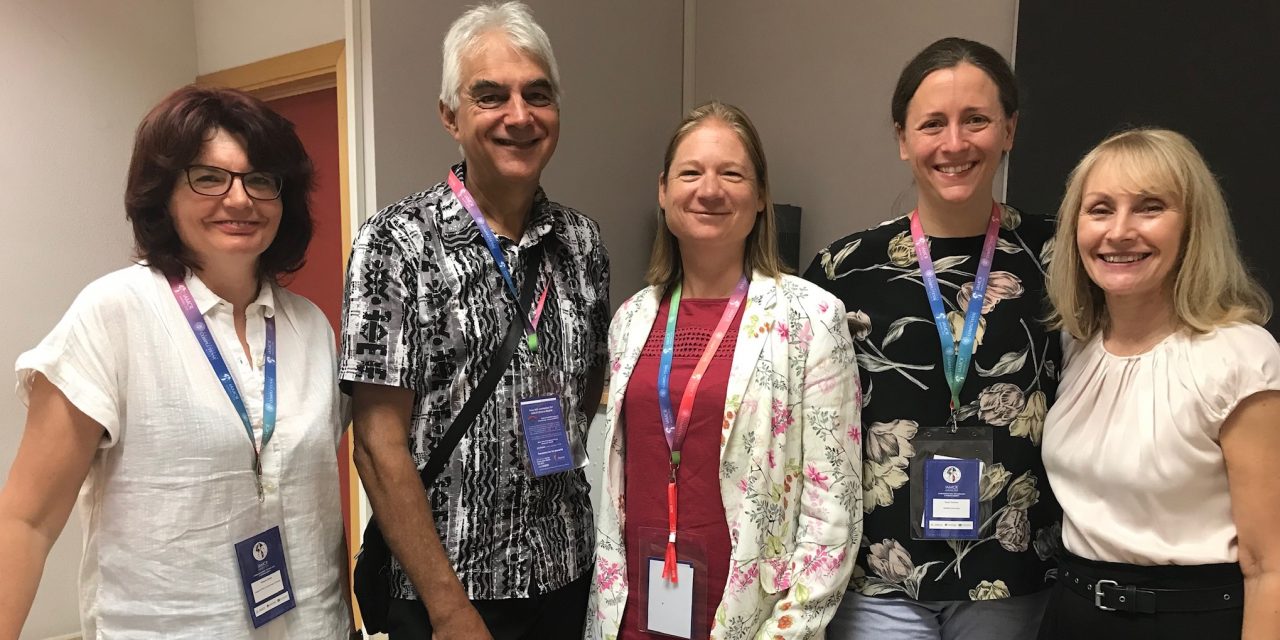For the second consecutive year the Centre for Freedom of the Media (CFOM) and UNESCO arranged a joint Journalism Safety Research Network (JSRN) panel at the International Association for Media and Communication Research (IAMCR) conference.
The panel entitled ‘Monitoring violations against journalists as part of a co-ordinated response to attacks on their fundamental rights’, was held on July 9, 2019, and brought together CFOM researchers Jackie Harrison, Diana Maynard and Sara Torsner as well as Guy Berger, UNESCO Director for Freedom of Expression and Media Development and Albana Shala, programme co-ordinator at Free Press Unlimited.
In her introductory remarks, Jackie Harrison highlighted the urgent need to protect journalists from various types of violations and aggressions and the role academia can play in this context: ‘Academic research can contribute to this agenda of protection by examining problems of safety from a range of different angles and perspectives’, Harrison said. Working to develop the activities and extend the membership of the Journalism Safety Research Network (JSRN) which is hosted by CFOM with support from UNESCO, ‘is one of the ways in which we seek to mobilise academia around the agenda to safeguard journalists’, Harrison said.
Guy Berger’s address reinforced this need for academic engagement and contribution when it comes to providing knowledge-based evidence that can facilitate the understanding of the complex nature of problems of safety.
One such area where there is opportunity for further academic research is that of the monitoring and implementation of the Sustainable Development Goals (SDG) Agenda, Berger noted. This is the case not least when it comes to SDG 16.10.1 which aims to monitor the number of verified cases of killing, kidnapping, enforced disappearance, arbitrary detention, torture of journalists, as well as other types of harmful acts directed at journalistic practitioners (Human Rights Council 2018), he explained. Indeed, ‘the mapping of the safety of journalists through indicator 16.10.1 can be used as a barometer of what happens in many other areas of society, for instance when it comes to access to information and fundamental human rights’, Berger noted.
Presenting research on how the monitoring of SDG indicator 16.10.1 can be strengthened through the adoption of an events-based methodology, Sara Torsner described problems related to the accessibility to reliable information on the range of categories of violations proposed by SDG indicator 16.10.1. ‘Definitional approaches adopted by monitoring organisations also rarely produce an explicit link to the human rights rationale which grounds the SDG agenda. This means that there is a need to establish such a rationale when trying to achieve monitoring in line with SDG 16.10.1’, Torsner further noted.
Diana Maynard continued to explain how an events-based, rather than a person-based monitoring approach, in combination with computerised data generation, collection and systematisation techniques can contribute towards overcoming the identified data challenges. In fact, ‘such techniques can facilitate the harmonisation of disparate data through the development of coding schemes that can be used to collate information from various sources in a way that adheres to the 16.10.1 methodology’, Maynard said. Maynard also demonstrated possibilities for developing a validity indicator that would help assess the trustworthiness of sources of information as a way to strengthen the reliability of the monitoring of violations against journalists.
For more information on the CFOM research project on strengthening the monitoring of 16.10.1 see here and here.

